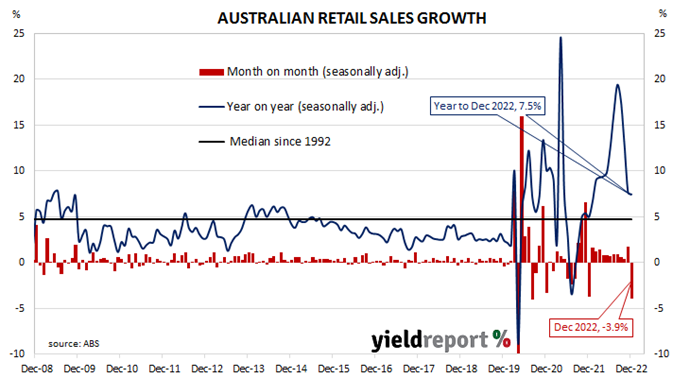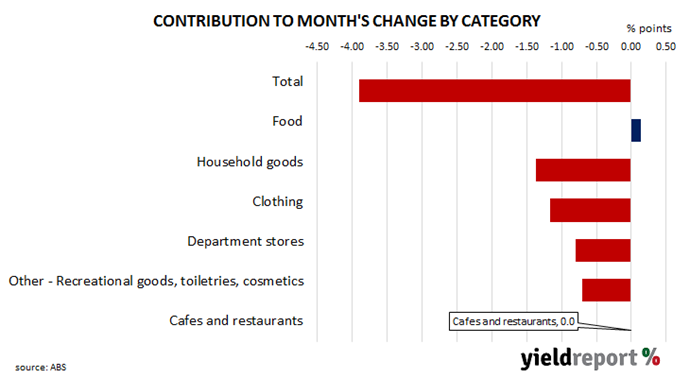Summary: Retail sales down 3.9% in December; fall considerably greater one than expected; figures affected by Black Friday/Cyber week sales; suggests reduced discretionary spending by households; largest influence on result from household goods.
Growth figures of domestic retail sales spent most of the 2010s at levels below the post-1992 average. While economic conditions had been generally favourable, wage growth and inflation rates were low. Expenditures on goods then jumped in the early stages of 2020 as government restrictions severely altered households’ spending habits. Households mostly reverted to their usual patterns as restrictions eased in the latter part of 2020 and throughout 2021, although not for all categories.
According to the latest ABS figures, total retail sales slumped by 3.9% in December on a seasonally adjusted basis. The fall was a considerably greater one than the 0.2% decline which had been generally expected and in contrast with November’s revised figure of +1.7%. However, sales still increased by 7.5% on an annual basis, down from November’s comparable figure of 7.7%.
“Some of this looks to be volatility around the Black Friday/Cyber week sales, complicated by seasonal adjustment difficulties,” said Westpac senior economist Matthew Hassan. “November’s 1.4% gain was marked up to 1.7% and there was a similar choppy profile around November-December in 2021.”
In the cash futures market, expectations regarding future rate rises softened slightly. At the end of the day, contracts implied the cash rate would rise from the current rate of 3.07% to average 3.24% in February and then increase to an average of 3.65% in May. August 2023 contracts implied a 3.75% average cash rate while November 2023 contracts implied 3.72%.
“Although strong Black Friday sales and a shift to travel spending in late 2022 put downward pressure on December retail sales, the extent of the fall suggests households have started to cut back on discretionary spending,” said ANZ economist Madeline Dunk. “We expect consumption growth to slow through 2023 as a result of higher interest rates and the recent decline in real wages due to very strong inflation.”
Retail sales are typically segmented into six categories (see below), with the “food” segment accounting for nearly 40% of total sales. However, the largest influence on the month’s total came from the household goods category where sales decreased by 7.8% on average over the month and accounted for -1.40 percentage points of the net result.



